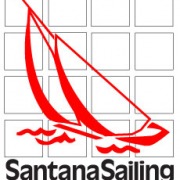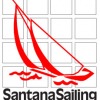Balancing the Helm
Hi Sailors,
I’m excited about this informative series of blogs on the themes we’re emphasizing on our upcoming Grenadines trips: SAIL; EXPLORE; GROW. The theme of this first blog is SAIL, and the subject is, Balancing the Helm.
Let’s Start With a Definition
Balancing the helm is the process of adjusting the sails so that the boat tracks in a straight line, with only minor corrections using the wheel, or tiller. I can remember way back when, wondering about this myself and asking, “Why worry about balancing the helm? I’ll just steer the boat where I want it to go. Right?”
Why Balance the Helm?
The short answer is that you’ll sail faster, ease the load on your autopilot, or on your helmsman, and enable self-steering without an autopilot. And that last one is a big one. Ah, an easier overnight passage, staying on course, arriving at your destination sooner, and not being worn out – that’s why!
I got my education on this subject back in the mid ‘90s. It was an overnight passage from Ensenada in Baja, Mexico, to Dana Point, CA. On that windy night, the instructor and trip leader, Mark Howe, had us tie in the second reef on the main, trim the sails a bit, and lock down the wheel-brake on the helm saying, “There, we’ve set the autopilot.” He went below to make bouillabaisse for dinner and I was amazed that the boat tracked straight, keeping us on course plus or minus about 5 degrees on the compass throughout the night.
How Do You Know When Your Helm is Balanced?
It’s easy. Can you lock the helm down without the autopilot and have her maintain course, plus or minus 5 to 10 degrees? Can you steer with two fingers, making only minor adjustments? Is your autopilot quiet, barely correcting course? Those are signs your helm is balanced.
What Happens When You’re Not Balanced?
Here are the symptoms: you lock down the helm but she won’t maintain course, rounding up into the wind; the autopilot steers a meandering course and gets over powered; the person steering is really getting a workout, and the boat is difficult to control. Time to balance the helm.
How Do You Balance the Helm?
Here’s a mnemonic to remember: Mainsail Up, Headsail Down. That is, a trimmed main, by itself, turns the boat Up, closer to the wind. A trimmed headsail, by itself, turns the boat Down, away from the wind. By adjusting the sail controls in small increments on either the main or jib, to increase or decrease power, you’ll begin to see how the boat responds. If the problem is weather helm (the boat turning Up toward the wind), you need to depower the main.
Note how the leech of the main, in the area of the sail number and above it, is twisted and far more open than the portion of the leech below it. Twisting off the main, as shown here, is just one way to depower the mainsail.
Learning to Find the Balance
Remember that 1) different boats will behave differently, 2) that it’s easier to get the boat to steer herself when closer to the wind, and 3) that things also change with the wind speed. For practice, take your boat out in a moderate breeze and experiment with getting it to steer itself. Don’t engage the autopilot – lock the helm down when you are tracking straight. Then, give it a couple of minutes to see whether she stays on course, heads up closer to the wind, or falls off, down from the wind. To dial it in, start making simple adjustments, one at a time, to the main, and then the jib. You really don’t need to know yacht design or aerodynamics to figure this out.
And, there’s another way. Balancing the helm and sail plan is just one of the practices you’ll work on mastering when you join us on our upcoming sail-training adventures – follow this link to learn more! It’s a week of sailing, learning to navigate and explore new cruising grounds, and working on the skills you want to master.
THOUGHT STARTER: I can think of 6 methods I regularly use for either powering up or depowering the main. What can you come up with? Comment below or email me!
See you on the water,
Marc Hughston
Santana Sailing
P.S. Up next with the EXPLORE theme – Sizing Up a New Anchorage.




